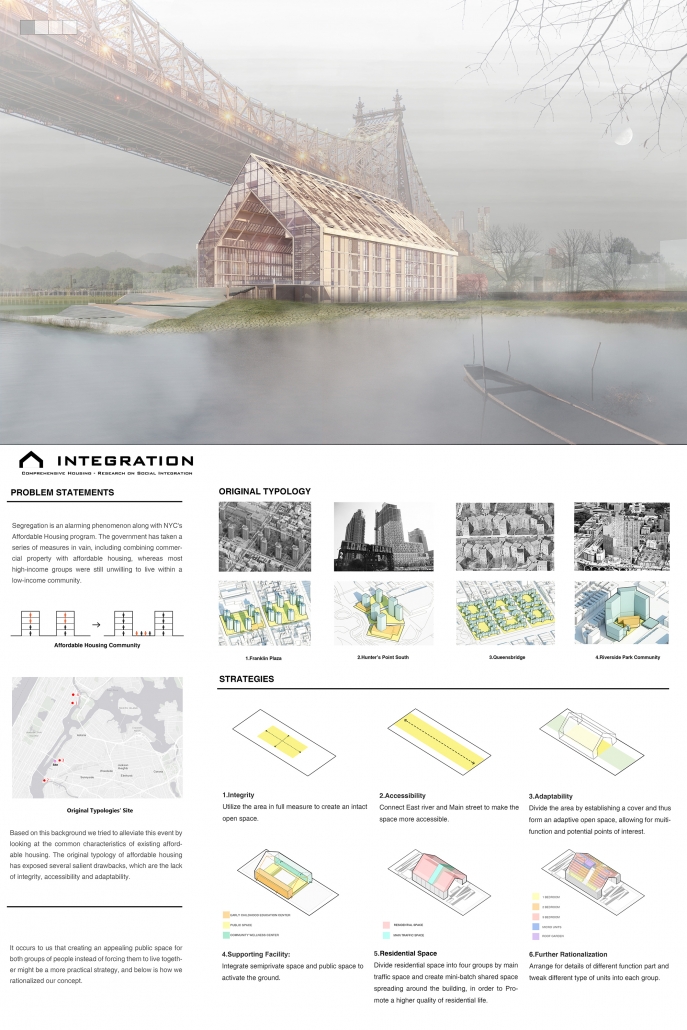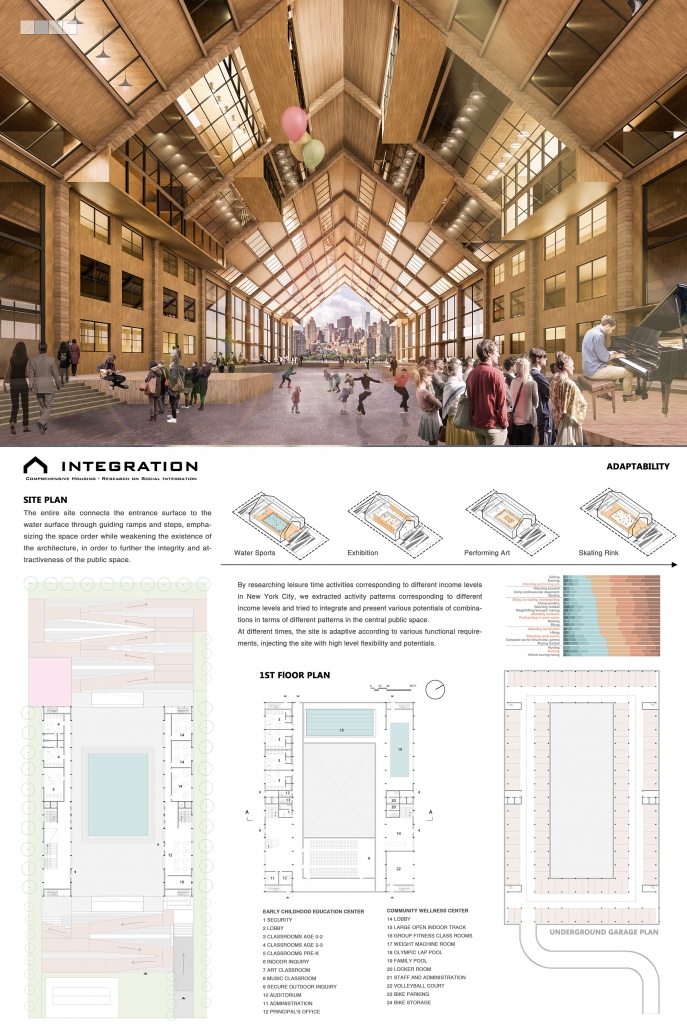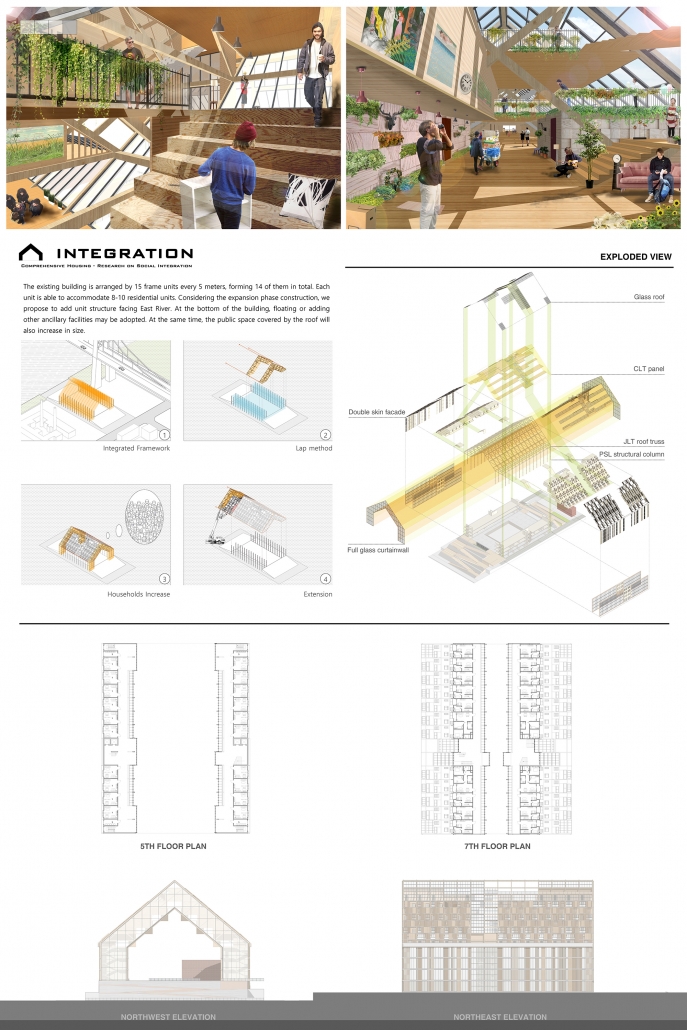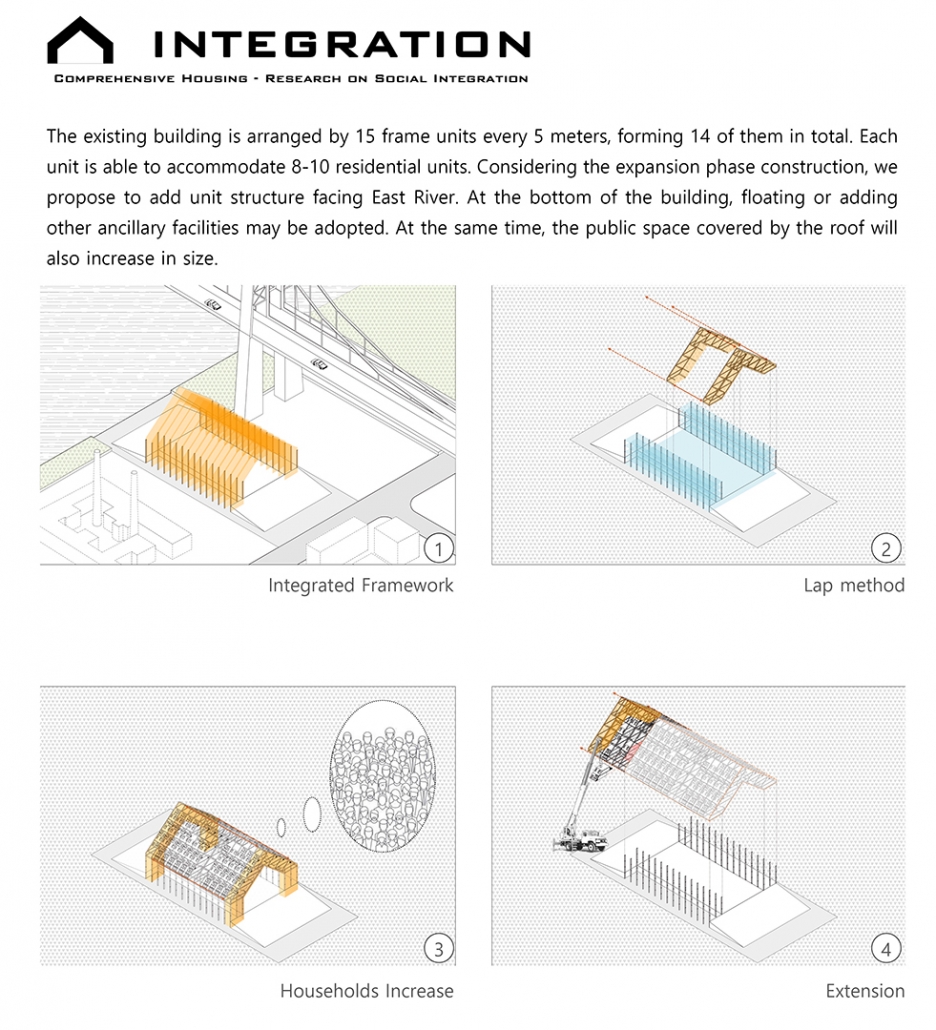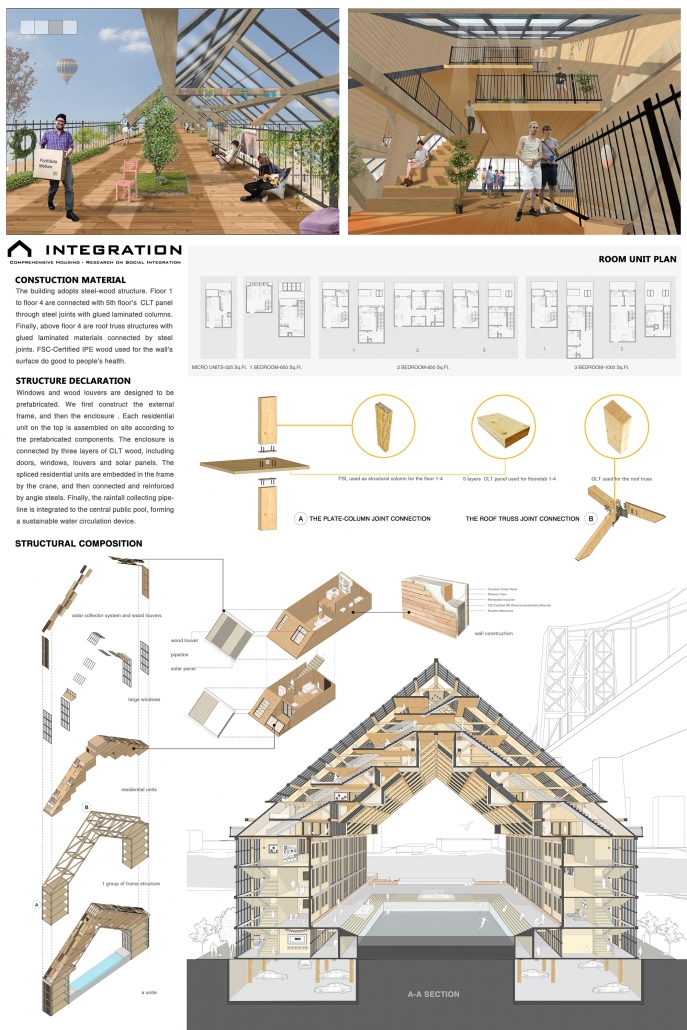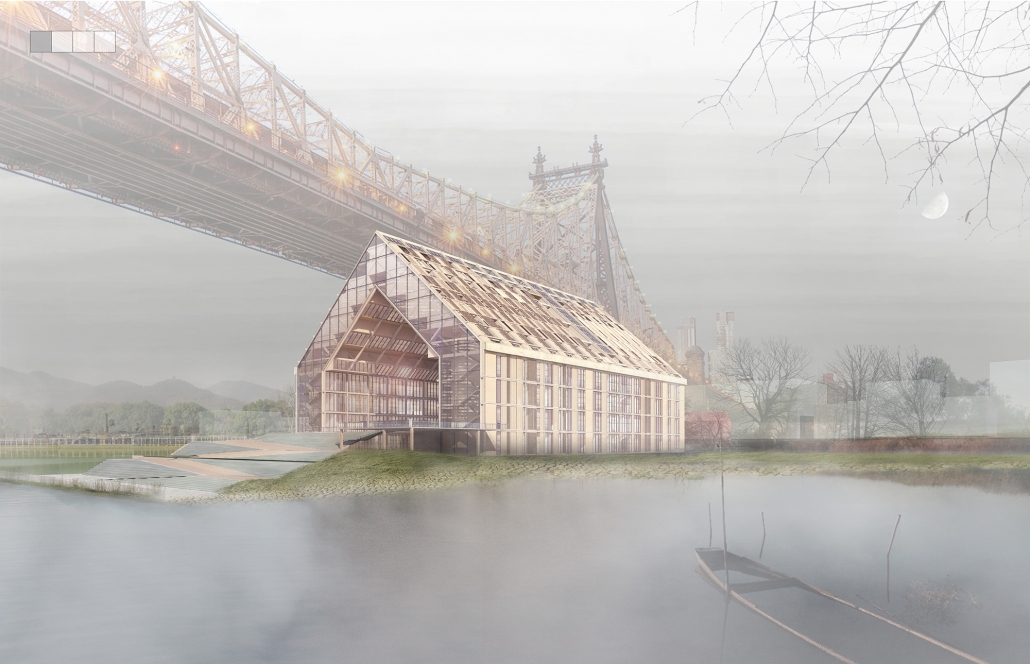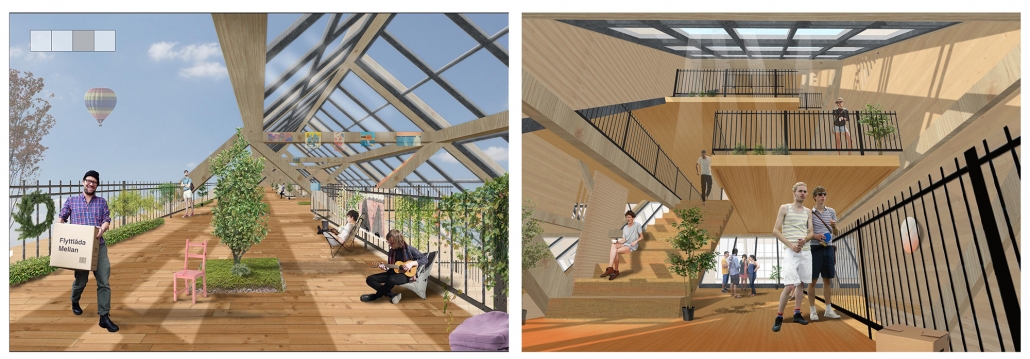2018-2019 Timber in the City
Honorable Mention: INTEGRATION
Linghao Wu, Weijun Kong, Hanxu Fan, & Pinyao Liu
INTEGRATION
Students: Linghao Wu, Weijun Kong, Hanxu Fan, & Pinyao Liu
Faculty: Yuhui Jin
School: Tongji University, UPro Design
Project Description
Segregation has been an alarming phenomenon along with NYC’s Affordable Housing program since 1934, the development of NYCHA. The government has taken a series of measures but in vain, which include combining commercial housing with affordable housing, as well as locating them at affluent neighborhood etc. The core issue is that even though two group of people were bound together physically, without overlapping activity pattern and social interaction during their residential life, most high-income groups were still unwilling to engage with and live within a low-income community.
After our study for the original typology of affordable housing, several salient features have been refined, which are the lack of integrity, accessibility and adaptability. It occurs to us that creating an appealing public space with positive interaction for both groups of people might be a more active strategy, compared with simply forcing them to live together. So how did we rationalize our concept?
Based on data related to leisure time activities of people living in New York City, we extracted activity patterns corresponding to different income levels, and tried to integrate and present various potentials forms of interaction between the two groups of people. Hence we proposed a new typology for affordable housing and tried to establish a way more accessible and intact open space, which serve as a core space to activate the ground area, in conjunction with signifying social connectedness. Flowing with hours, days and seasons, this site is adaptive according to various functional requirements, bringing the site with high level flexibility and many more potentials for social activities. Meanwhile, it connects the entrance surface to the water surface through guiding ramps and steps, emphasizing the space order while weakening the existence of the architecture, with an intention to further the integrity and attractiveness of the public space.
All in all, we hope to not only get people more in touch with timber and the rich connotation of nature behind it, but also enable residents around LIC to be more social connected, and encourage them to emotionally engage with this poetic “integration” — This is our common place, our common community, and our common home.

 Study Architecture
Study Architecture  ProPEL
ProPEL 